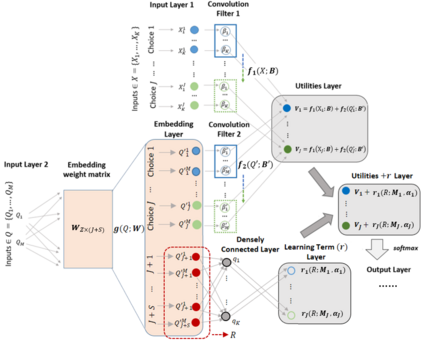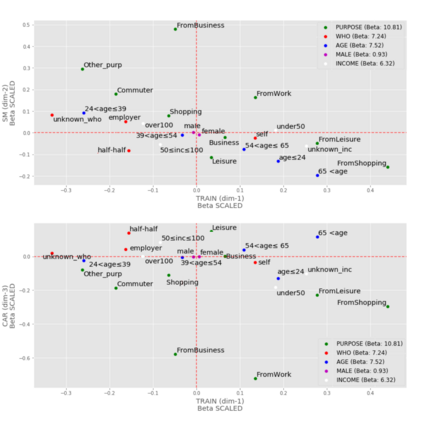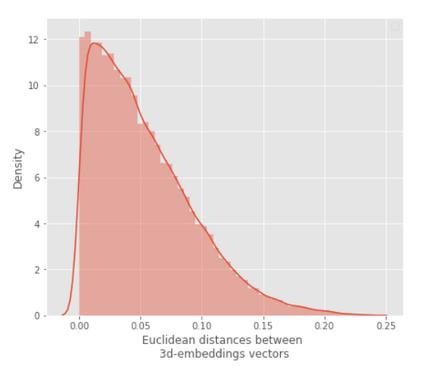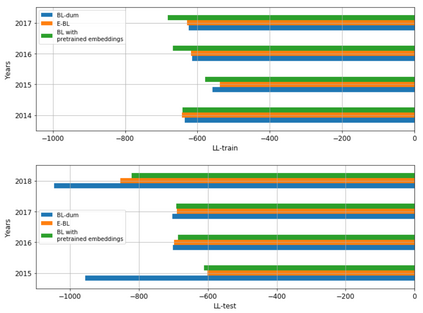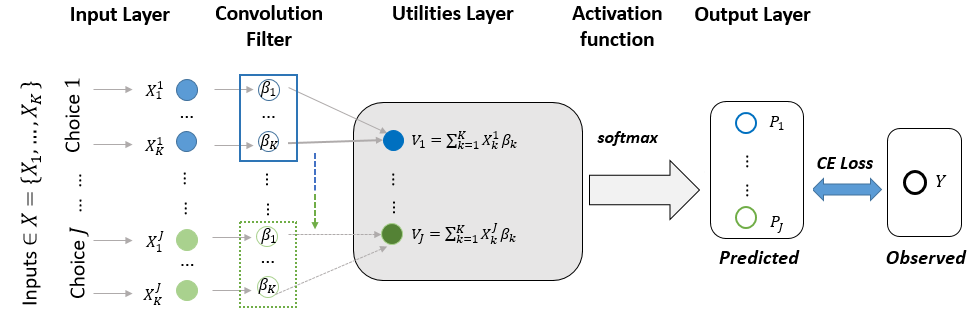This study proposes a novel approach that combines theory and data-driven choice models using Artificial Neural Networks (ANNs). In particular, we use continuous vector representations, called embeddings, for encoding categorical or discrete explanatory variables with a special focus on interpretability and model transparency. Although embedding representations within the logit framework have been conceptualized by Camara (2019), their dimensions do not have an absolute definitive meaning, hence offering limited behavioral insights. The novelty of our work lies in enforcing interpretability to the embedding vectors by formally associating each of their dimensions to a choice alternative. Thus, our approach brings benefits much beyond a simple parsimonious representation improvement over dummy encoding, as it provides behaviorally meaningful outputs that can be used in travel demand analysis and policy decisions. Additionally, in contrast to previously suggested ANN-based Discrete Choice Models (DCMs) that either sacrifice interpretability for performance or are only partially interpretable, our models preserve interpretability of the utility coefficients for all the input variables despite being based on ANN principles. The proposed models were tested on two real world datasets and evaluated against benchmark and baseline models that use dummy-encoding. The results of the experiments indicate that our models deliver state-of-the-art predictive performance, outperforming existing ANN-based models while drastically reducing the number of required network parameters.
翻译:这项研究提出了一种将理论和数据驱动选择模型结合使用人工神经网络(人工神经网络)的新颖方法。特别是,我们使用连续的矢量表示法,称为嵌入式,用于编码绝对或离散的解释变量,特别侧重于解释性和模型透明度。虽然Camara(2019年)对在逻辑框架中嵌入代表法的概念进行了概念化,但其层面没有绝对确定的含义,因此提供了有限的行为洞察力。我们的工作新颖之处在于通过正式将每个层面与选择选项联系起来,对嵌入矢量的可解释性加以执行。因此,我们的方法带来的好处远远不止于简单的微调代表制改进而非假编码,因为它提供了在旅行需求分析和政策决定中可以使用的行为上有意义的产出。此外,与以前提出的基于ANNE的差异选择模型(2019年)相比,它们不是对业绩的可解释性就只是部分可解释性,我们的模式保留了所有输入变量的实用系数的可解释性系数,尽管以ANNE原则为基础。因此,我们的拟议模型在两个真实的世界数据模型上进行了测试,并评估了可用于基准和预测性模型,同时用模型来减少现有基准和预测性模型。



